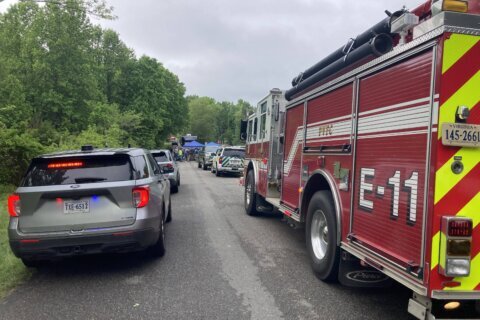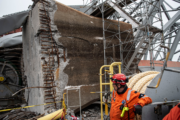WASHINGTON — Alexandria isn’t Blacksburg.
When the Virginia Tech Innovation Campus is built, it will be the latest iteration of Virginia Polytechnic Institute and State University, which is steeped in traditions dating back to 1872.
Yet, one tradition — or policy, actually — will not be in effect when the innovation campus is built in the area to be known as National Landing, 2 miles from the new Amazon headquarters and 275 miles from the Drillfield in Blacksburg.
The new campus will be Hokie Stone Optional.
Any visitor to the Blacksburg campus has seen the rock used in many of the university’s Collegiate Gothic architecture.
Prevalent in quarries in Virginia, Tennessee and Alabama, what came to be known as Hokie Stone is dolomite.
According to the university, “A sedimentary rock, it formed from calcium and magnesium carbonate and occurs in muted shades of pink, red, gray, brown and black.”
During a recent panel in Alexandria, Brandy Salmon, managing director of the Virginia Tech Innovation Campus, was asked to explain what Hokie Stone is, and whether it would be used in the construction of the new campus.
By the late 19th and early 20th centuries, university leaders decided limestone blocks should be used in campus buildings. The first building designed in neo-Gothic architecture, using the native stone was McBryde Hall, which was constructed in 1914 (and razed in 1966).
However, in the late 1960s and early 1970s, amid a trend toward modernism, “there was a worrisome departure,” and several modern Virginia Tech buildings were constructed.
But in the 1990s a board of visitors committee declared its intent, and in 2010 the entire board passed a resolution, transforming that intent into official policy.
“So, now we must build buildings in Blacksburg, with Hokie Stone,” said Salmon. “Those restrictions do not apply up here.”
The Hokie Stone tradition isn’t limited to architecture.
View this post on Instagram
Since 1965, shortly before players emerge from a tunnel onto the field for home football games at Lane Stadium, they reach above their heads to slap a slab of Hokie Stone, mounted in the tunnel.
It reads: “For those who have passed, for those to come. Reach for excellence.”
“We will really work to build buildings consistent with the look and feel we’re going for,” said Salmon, while not ruling Hokie Stone in or out as one of the materials. “Probably something modern in design, without being too modern — and just beautiful places to be.”
Given the tradition and importance: “I would imagine there will be at least a touchstone of Hokie Stone here. You’ll certainly have the opportunity to come and touch stone, if needed.”








